#Bivalve Shell Fossil
Explore tagged Tumblr posts
Photo

Rare Cardita listeri Fossil Bivalve – Middle Lias, Lower Sinemurian, Jurassic, UK | Authentic Specimen
Rare Cardita listeri Fossil Bivalve – Lower Sinemurian Stage, Jurassic Period – Blockley, United Kingdom
This listing features a rare Cardita listeri fossil bivalve from the Lower Sinemurian stage of the Jurassic period, discovered in the Middle Lias Formation at Blockley, United Kingdom. This well-preserved specimen highlights the distinct ridged shell structure that characterizes the Cardita genus.
About Cardita listeri:
Cardita listeri is an extinct species of marine bivalve that thrived in the shallow seas during the Jurassic period. Known for its thick, robust shell with pronounced radial ribs, Cardita listeri was a burrowing filter feeder, playing a vital role in ancient marine ecosystems. Its durable shell allowed it to withstand dynamic marine conditions, making it a common find in certain fossil beds.
Geological Context:
Formation: Middle Lias
Age: Lower Sinemurian, Jurassic (~199 – 190 million years ago)
Location: Blockley, United Kingdom
The Middle Lias Formation is renowned for its rich marine fossil deposits, preserving a variety of life forms such as ammonites, belemnites, gastropods, and bivalves like Cardita listeri. The Lower Sinemurian period marks a time of abundant shallow seas, ideal for marine biodiversity.
Fossil Details:
100% Genuine Cardita listeri Fossil Bivalve
Age: Lower Sinemurian, Jurassic (~199 – 190 million years ago)
Origin: Blockley, United Kingdom
Thick, Ribbed Shell Structure with Natural Detailing
Scale Rule Squares/Cube = 1cm (Please refer to photos for full sizing)
Comes with a Certificate of Authenticity
From the prestigious Alice Purnell Collection, one of the world’s largest ammonite and marine fossil collections
Why This Specimen is Special:
Rare Jurassic Bivalve Fossil from the UK
Detailed ribbed shell in excellent preservation
Ideal for Collectors, Museums, or Educational Displays
Carefully selected for its geological and historical significance
A unique addition to any fossil or natural history collection
This Cardita listeri fossil bivalve offers a glimpse into Earth’s prehistoric marine environments and is perfect for fossil enthusiasts, educators, and collectors.
📦 Fast & Secure Shipping 🛡️ 100% Authenticity Guaranteed 💎 A Premium Collector’s Fossil Specimen
Add this remarkable piece of Jurassic marine history to your collection today!
#Cardita listeri#Fossil Bivalve#Jurassic Fossil#Middle Lias Fossil#Lower Sinemurian Fossil#Bivalve Shell Fossil#UK Fossils#Blockley Fossils#Authentic Fossil Shell#Prehistoric Marine Life#Natural History Specimen#Fossil Collection#Museum Quality Fossil#Alice Purnell Collection#Geological Collectibles
0 notes
Text







Illustration of Cretaceous Bivalvia (previously called Lamelliabranchia) by Thomas Alfred, Brock from the Monograph of Palaeontographical Society Vol. 63 (1909)
7 notes
·
View notes
Photo

🦖 Description des mollusques fossiles qui se trouvent dans les grès verts des environs de Genève /. Genève: impr. de Jules-Guillaume Fick, 1847-1853.. Original source Image description: Historical illustration depicting various fossilized mollusk shells from the Cretaceous period near Geneva. The image features detailed, black-and-white lithographic drawings of multiple bivalve species, including Astarte gurgitis, Crassatella Saxoneti, C. Sabaudiana, C. Fisiana, Cardita Constantii, and C. rotundata. Each shell is shown from different angles, highlighting distinct shapes, ridges, grooves, and hinge structures. The shells vary in form from rounded to elongated, with textured surfaces illustrating fine striations and anatomical features relevant to paleontological classification. The plate is labeled "Pl. 33" and includes scale bars for size reference.
25 notes
·
View notes
Text
Fossil Friday: Campanile giganteum

One of our surprisingly popular March Madness competitors, Campanile giganteum is marine snail from the Paris Basin of France during the Eocene Epoch 56-33.9 Ma. It was first described by the famous Jean-Baptiste Lamarck in 1804, He initially had it in the genus Cerithium, which, to be fair, doesn't look a whole lot different.

It was found in the Lutetian limestone (Calcaire lutecian) also known as the Paris Stone. This formation consists of a freshwater limestone deposited on top of a marine limestone as well as some minor calcareous and glauconitic sandstones. This suggests an open, shallow subtidal zone.
This giant snail lived alongside other invertebrates like foraminiferans,
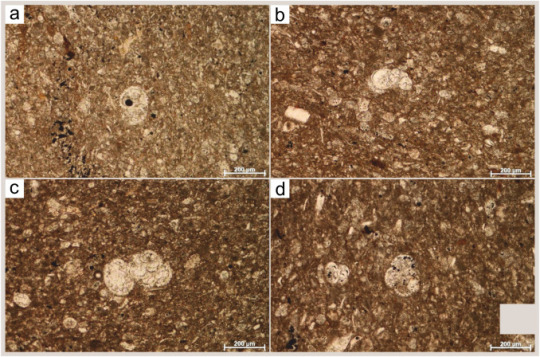
a bivalve called Crassatella,
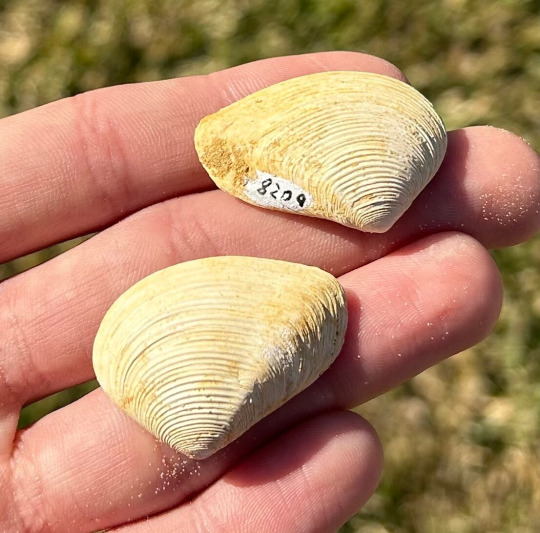
other snails,
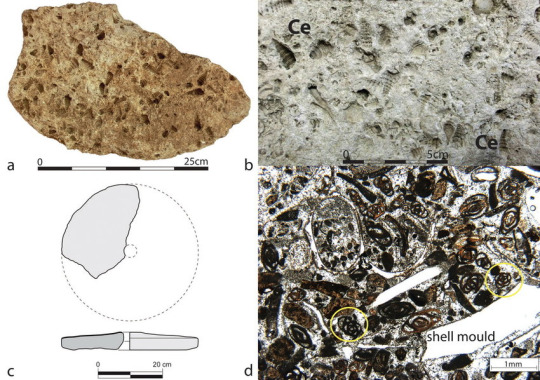
and marine worms.
C. giganteum is actually only one species of many within the genus Campanile. it belongs in the phylum Mollusca which includes snails, cephalopods and bivalves.
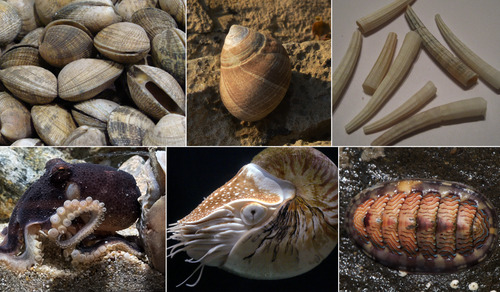
From there they belong in the class gastropoda, commonly known as snails and slugs.

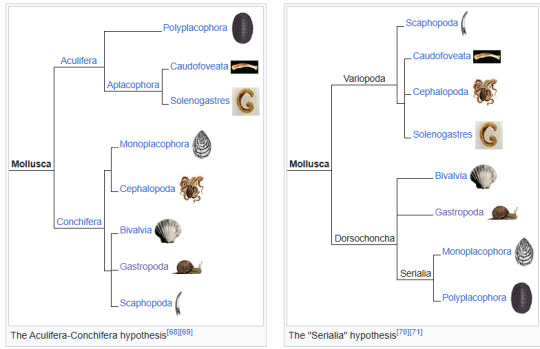
There's currently a bit of debate going on with taxonomy further down, but there are at least 18 named species of Campanile including one living species C. symbolicum whose common name is the Bell Clapper or Giant Creeper. It lives in coastal waters off southwestern Australia.
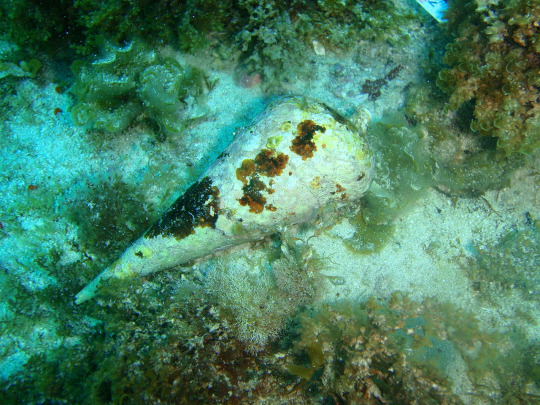
C. giganteum was the largest gastropod to have lived (as far as we know). It got up to 35 in (90cm) on average. C. symbolicum only gets to a little less than 10 inches (24 cm).
A study was done in 2020 on C. giganteum in regard to growth and paleoseasonality. They found that C. giganteum grew upwards of 600 mm per year along the helix of their shell. They concluded that it lived in water between 21-32 degrees Celsius (69.8-89.6 degrees F) which really isn't all that different from the Mediterranean Sea today (a little warmer). If you want to read more about this study, here's the link:
https://agupubs.onlinelibrary.wiley.com/doi/full/10.1029/2019GC008794
Make sure you tune in Monday as we talk more about different types of igneous rocks! Fossilize you later!

26 notes
·
View notes
Text

Shout out to whatever made this hole in Cloudina, congratulations on being the first animal who realized you could eat other animals
(Explanation: Cloudina is a fossil of uncertain affinity that lived at the very end of the Ediacaran period, some 550 million years ago, just before the Cambrian began. It and some contemporaries are the oldest organisms known with a shell. A fossil of Cloudina shows a hole similar to the one predatory snails make on bivalve shells, which makes it AFAIK the oldest evidence of active predation.)
33 notes
·
View notes
Text
Phylum Round 1
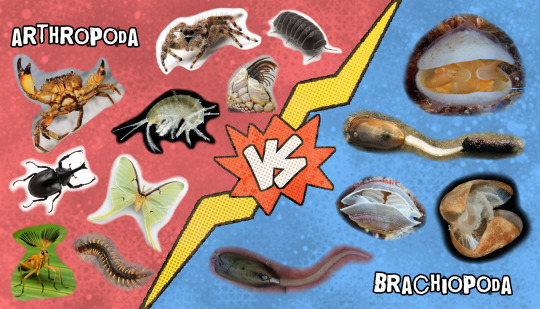
Arthropoda: Insects, arachnids, crustaceans, and others. The largest and one of the most diverse phyla on Earth, Arthropods have thrived on every continent and ocean, including Antarctica. Their most defining feature is their exoskeleton, which provides both support and protection - Arthropods have developed a number of adaptations to overcome the drawbacks of, as my invertebrate zoology professor liked to say, "living in a vacuum-sealed medieval suit of armor". They possess body segments that have been specialized for their lifestyles, on land or sea. They have relatively complex brains, and many species have shown remarkable cognition. We have had a complicated relationship with Arthropods since the dawn of humanity; they have been critical food sources, disease-carriers and parasites, essential farming partners, and maligned farming pests for thousands of years.
Brachiopoda: Lamp Shells. Although these shelled animals may look similar to bivalve Molluscs, they are a completely separate phylum. Ancient relics of the Cambrian explosion, these living fossils are identified by their "lophophores", which are spiraling structures with tentacles used to filter feed small plankton and detritus from the waters where they live. These lophophores are similar to those found in Phoronida and Bryozoa, as these phyla are closely related. An anchoring appendage called a "peduncle" keeps them firmly rooted in the sediment, which makes them difficult for predators to dig up. In the Paleozoic, these animals were some of the most prominent reef-builders on Earth, producing impressive structures analogous to modern oyster reefs today.
#cw insects#cw spiders#arthropoda#brachiopoda#animal bracket#tumblr bracket#bracket tournament#poll bracket#phylum round 1#phylum
114 notes
·
View notes
Text

my fossils :)
got some shells, corals, ear bones, various scutes, bivalves and various animal teeth! i like to think about the "x" rock a lot and wonder what it is. right now i like to think it's a mark of predation of some kind.
#also just some fun rocks in there :)#i dont know what the big rock is but i like it. yay! its probably some bivalve impression but i like to imagine it's something else#fossils#i went back to the pit i got them from and threw a bunch back i just wanted to autism out and arrange some things i like
4 notes
·
View notes
Text






Chitons formerly known as Amphineura. About 940 extant and 430 fossil species are recognized.
They are also sometimes known as sea cradles or coat-of-mail shells or suck-rocks, or more formally as loricates, polyplacophorans, and occasionally as polyplacophores.
Chitons have a shell composed of eight separate shell plates or valves. These plates overlap slightly at the front and back edges, and yet articulate well with one another. Because of this, the shell provides protection at the same time as permitting the chiton to flex upward when needed for locomotion over uneven surfaces, and even allows the animal to curl up into a ball when dislodged from rocks. The shell plates are encircled by a skirt known as a girdle.
Chitons live worldwide, from cold waters through to the tropics. They live on hard surfaces, such as on or under rocks, or in rock crevices.
Some species live quite high in the intertidal zone and are exposed to the air and light for long periods. Most species inhabit intertidal or subtidal zones, and do not extend beyond the photic zone, but a few species live in deep water, as deep as 6,000 m (20,000 ft).
Chitons are exclusively and fully marine, in contrast to the bivalves, which were able to adapt to brackish water and fresh water, and the gastropods which were able to make successful transitions to freshwater and terrestrial environments.
17 notes
·
View notes
Text

Plartulox and Conecrete (Rock-Poison)
(Revived from the Cone Fossil)
Rogues of the deep sea, Plartulox and Conecrete are greedy and vain beasts,widely scorned throughout Ãrohwa and using their abilities for underhanded activities in turn, however it wasn't always this way...
Once they were revered throughout Ãrohwa for their beautifully patterned shells and assistance in reinforcing the islands with their cementlike slime, they grew discontented with their lack of praise compared to the tapu and the heroic pokemon who led them, and hatched a plan to capture and devour the tapu in the deep sea. Their plan however failed, and the subsequent witch hunt lead to a massive decline of the species, those remaining retreating to the deep sea trenches and abysses to the point many in Ãrohwa find it hard to believe they still exist.
However this current contempt belies another issue, as recently these pokemon have been targeted by seedy companies willing to exploit Plartulox and Conecrete for cheap "green" concrete, destroying the deep sea habitats they and many other rare pokemon live in to find them, after all, who would care about a creature so widely villanised...?
Welcome to fossil month! (Fossilcember?) A drawing challenge I have set myself to properly draw all of the different fossil mon I've created for the Ãrohwa region, starting with these two.
Design inspiration down below:
The four lines of fossil pokemon found across Ãrohwa are linked by a specific theme, theyre all based on Lazarus Taxa along with a specific extinct animal.
What's a lazarus taxa? An animal which when first described was thought to be extinct,and they're surprisingly common too . A famous example is the ceolocanth, initially described from mesozoic fossils in the 1800s and rediscovered in the 1930s (regardless that the east african fishermen who lived around that area knew it existed for an age before that but thought nothing of it as the fish was no good for eating,but I'm getting ahead of myself) but other examples include the chaco peccary, neptune cup sponge and Lord howe stick insect.



Regardless of all that, which creatures are Plartulox and Conecrete based on?
The primary inspiration for this pokemon are partula snails and cone snails. Both of these animals are found in the south pacific and are respectively threatened by invasive species (with many partula species going extinct) and overcollection respectively. Cone snails are also known for secreting a venom strong enough to be fatal to humans.


In terms of lazarus taxa, the closest I can find would be the bell clapper sea snail, an Australian species and last surviving member of its family (the shell pictured is of an eocene relative whose shell grew to over a meter long!)


There's also a mythological aspect to its lore, as it was inspired by the stories of Rogo-Tumu-Here, an octopus demon who captured the wife of one of the Tuamotan island's gods before being killed during her rescue.
Finally beyond that,there's scant inspiration from rudists (reef building cretaceous bivalves) cement mixers and evil sorcerers with tall wizard hats.
Anyway I hope you like these guys, see you next Wednesday for the next one!
7 notes
·
View notes
Photo

Rare Cardita listeri Fossil Bivalve – Middle Lias, Lower Sinemurian, Jurassic, UK | Authentic Specimen
Rare Cardita listeri Fossil Bivalve – Lower Sinemurian Stage, Jurassic Period – Blockley, United Kingdom
This listing features a rare Cardita listeri fossil bivalve from the Lower Sinemurian stage of the Jurassic period, discovered in the Middle Lias Formation at Blockley, United Kingdom. This well-preserved specimen highlights the distinct ridged shell structure that characterizes the Cardita genus.
About Cardita listeri:
Cardita listeri is an extinct species of marine bivalve that thrived in the shallow seas during the Jurassic period. Known for its thick, robust shell with pronounced radial ribs, Cardita listeri was a burrowing filter feeder, playing a vital role in ancient marine ecosystems. Its durable shell allowed it to withstand dynamic marine conditions, making it a common find in certain fossil beds.
Geological Context:
Formation: Middle Lias
Age: Lower Sinemurian, Jurassic (~199 – 190 million years ago)
Location: Blockley, United Kingdom
The Middle Lias Formation is renowned for its rich marine fossil deposits, preserving a variety of life forms such as ammonites, belemnites, gastropods, and bivalves like Cardita listeri. The Lower Sinemurian period marks a time of abundant shallow seas, ideal for marine biodiversity.
Fossil Details:
100% Genuine Cardita listeri Fossil Bivalve
Age: Lower Sinemurian, Jurassic (~199 – 190 million years ago)
Origin: Blockley, United Kingdom
Thick, Ribbed Shell Structure with Natural Detailing
Scale Rule Squares/Cube = 1cm (Please refer to photos for full sizing)
Comes with a Certificate of Authenticity
From the prestigious Alice Purnell Collection, one of the world’s largest ammonite and marine fossil collections
Why This Specimen is Special:
Rare Jurassic Bivalve Fossil from the UK
Detailed ribbed shell in excellent preservation
Ideal for Collectors, Museums, or Educational Displays
Carefully selected for its geological and historical significance
A unique addition to any fossil or natural history collection
This Cardita listeri fossil bivalve offers a glimpse into Earth’s prehistoric marine environments and is perfect for fossil enthusiasts, educators, and collectors.
📦 Fast & Secure Shipping 🛡️ 100% Authenticity Guaranteed 💎 A Premium Collector’s Fossil Specimen
Add this remarkable piece of Jurassic marine history to your collection today!
#Cardita listeri#Fossil Bivalve#Jurassic Fossil#Middle Lias Fossil#Lower Sinemurian Fossil#Bivalve Shell Fossil#UK Fossils#Blockley Fossils#Authentic Fossil Shell#Prehistoric Marine Life#Natural History Specimen#Fossil Collection#Museum Quality Fossil#Alice Purnell Collection#Geological Collectibles
0 notes
Text
#2759 - Waiparia sp. - Lamp Shell

A genus of Brachiopods from the Oligocene and Miocene of New Zealand, when most of the microcontinent of Zealandia was submerged. Exactly which species of Waiparia would be a matter of contention, as paleontologists working on the group named new species with gay abandon (including three different species from another genus in a single geological deposit) without considering the likelihood of morphological variation within the species.
Quite common fossils in the Kokoamu Greensand, a sedimentary unit better known for its giant penguins and XBOX HUEG sharks.
Despite their resemblance to clams, brachiopods are not molluscs - for one thing the shells are symmetrical from right to left. Internally they're very different too - their feeding structure or lophophore is a crown of tentacles with cilia (fine hairs) to filter food out of the water. The hole visible in both fossils above is the pedicle opening, through which they attached to the seafloor or other organisms with a stiff stalk.
Living brachiopod species are not as common as they used to be - prior to the Permian-Triassic mass extinction, they outnumbered bivalved molluscs.
University of Otago Geology Museum, Dunedin, Aotearoa New Zealand.
#brachiopods#new zealand fossil#university of otago geology museum#waiparia#Terebratellidae#brachiopod#fossil#lamp shell
2 notes
·
View notes
Text
Round 3 - Chondrichthyes - Heterodontiformes




(Sources - 1, 2, 3, 4)
While several extinct genera of Heterodontiformes are known from the Jurassic, today only one genus, Heterodontus, the “Bullhead Sharks” remains. Ten living species of bullhead shark have been described.
Bullhead sharks are relatively small, with the largest species reaching just 1.65 metres (5.5 ft) in maximum length. They have tapered bodies, with blunt, proportionally large heads, relatively small mouths, pig-like snouts, and pronounced ridges above their eyes. They have two large dorsal fins, the first larger than the second, and an anal fin. Both dorsal fins have a rigid spine at the front of each fin which is used for defense. Bullhead Sharks are bottom feeders in tropical and subtropical waters. They have cusped grasping teeth at the front of the mouth, and flattened teeth at the back of the mouth. They use the flattened teeth at the back of their mouth to crush hard-shelled prey like bivalves, crustaceans, and sea urchins, and the grasping teeth on soft-bodied prey like worms, anemones, and octopuses. They hunt at night by "walking" along the sea floor with alternating motions of their pectoral and pelvic fins.
Bullhead shark egg cases are shaped like an auger, with two spiral flanges. This allows the egg cases to become wedged in the crevices of rocky sea floors, where the eggs are protected from predators; however, some bullhead sharks deposit their eggs on sponges or seaweed. Due to their spiral shape, each egg case requires several hours to rotate out of the mother shark's cloaca (Oof). She usually lays two at a time. The eggs typically hatch after 7 to 12 months, depending on the species. The pups will usually reach over 14 cm in length by the time they leave the egg case.
The Heterodontiforms appear in the fossil record in the Early Jurassic, with modern forms appearing in the Late Jurassic. Despite the very ancient origins of the genus, phylogenetic evidence indicates that all living species in the genus arose from a single common ancestor that survived the K-Pg extinction.

Propaganda under the cut:
Female Japanese Bullhead Sharks (Heterodontus japonicus) are known to deposit their eggs in communal nests, with as many as 15 eggs left in the same nest.
Horn Sharks (Heterodontus francisci) (image 2) have relatively small territories they hunt in at night, returning to the same “house” during the day. They may remain faithful to the same territory for over a decade. Now that’s a homebody.
Horn Sharks are queued by light rather than by an internal clock. In laboratory settings, they will become active as soon as lights are turned off. If they are in the middle of something when the lights are turned on, they may stop swimming and sink to the bottom. In one experiment where the sharks were kept in darkness, they remained continuously active for 11 days before slowing from fatigue. (☹️)
The Horn Shark generates the highest known bite force relative to its size of any shark, which it uses to crack into mollusks, echinoderms, and crustaceans. One study found the average bite force for this species in the wild to be 95 N with a maximum of 135 N, while under experimental conditions sharks could be induced to bite with over 200 N of force.
Female Horn Sharks in the wild pick up their egg cases in their mouths and wedge them into crevices to keep them safe.
In July 2018, three people were arrested after stealing a juvenile Horn Shark from the San Antonio Aquarium. The shark was scooped out of its tank and smuggled out of the aquarium in a stroller, wrapped in a wet blanket. It was thankfully returned unharmed two days later.
The Crested Bullhead Shark (Heterodontus galeatus) (image 4) produces spiral-shaped egg capsules that are secured to seaweed or sponges with long tendrils.
The Crested Bullhead Shark is a major predator of the eggs of the Port Jackson Shark! Individual sharks have been observed taking the egg capsules in their mouths and chewing on the tough casing, rupturing it and allowing the yolk to be sucked out, or simply swallowing the capsules whole.
The Port Jackson Shark (Heterodontus portusjacksoni) (image 1) is a migratory species, traveling south in the summer and returning north to breed in the winter. Males tend to arrive to the breeding grounds first with the females arriving later and staying later, perhaps as a means to reduce egg predation upon their newly laid eggs.
While juvenile Port Jackson Sharks are not particularly social, adults are often seen resting in caves in groups, and prefer to associate with specific sharks based on sex and size. In lab settings, these sharks were shown to have unique personality traits and preferences, can be trained, can count, and can learn by watching other sharks.
66 notes
·
View notes
Text
Who knew the randomly large amount of research on shells for Fools Gold I did would come in handy in my geology class while we look at bivalve fossil shells
22 notes
·
View notes
Text
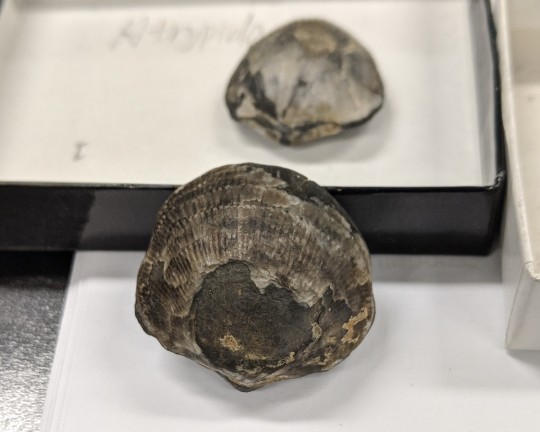

Happy Fossil Friday!
Who: Atrypids!
What: Atrypidae. A group of extinct brachiopods also called "lamp shells" because of their shape
When: Late Ordovician to the Upper Devonian
Where: Found most places other brachiopods are found (including but not limited to: China, Europe, and North America).
Fun Fact!: Like all brachiopods, one thing that sets them apart from clams (bivalves) is the filter feeding apparatus called a "lophophore". Characteristic to Brachiopoda, this structure allows the organism to feed by creating water currents that run over spiral shaped structures inside the brachiopod and filter out particles of food to be digested.
Why are they cool?: Atrypids (as well as other Brachiopods) make fantastic fossils for determining the ages of assemblages, as they are restricted to very specific ranges and if you find a certain brachiopod in your fossil bed, you can easily get a good estimate of the age.
Here is a link to a video of a dissection of an extant brachiopod Lingula for those interested in the unique internal anatomy of these critters.
Science warning for information hunters!: While fact checking some of the information used in this post, I skimmed the Wikipedia article for this group and found that they say the range of the group was Ordovician to Carboniferous, following the link they cited the information to, I saw they used the ranges for a trilobite genus, rather an actual Brachiopod group. Just fair warning to all the new and experienced science lovers out there, Wikipedia is a wonderful source to jump from, to orient yourself in a sea of confusing and often bloated information, but ALWAYS check their sources yourself!)
Happy hunting!
Image Credits: (Both) A. Johnson
#palaeontology#paleontology#fossil friday#fossils#palaeoart#paleo#paleoart#atrypids#brachiopods#brachiopoda#marine fossils
10 notes
·
View notes
Text
Fossil Friday: Brachiopods
Brachiopods are any interesting animals. They look like clams and other bivalves but are more closely related to cuttlefish.
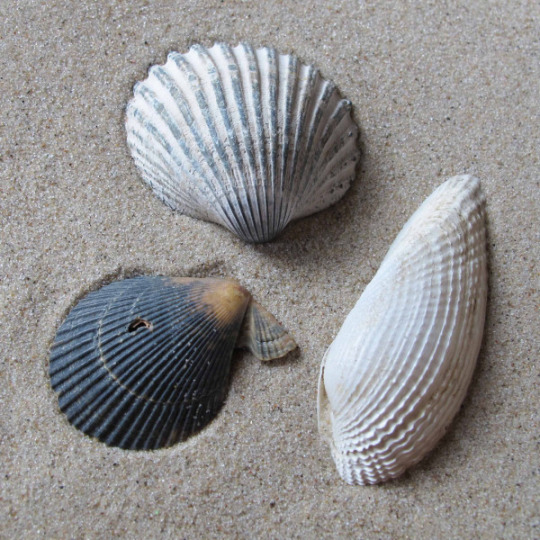

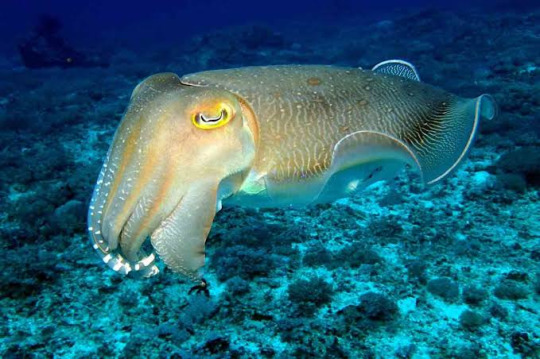
6 of the 8 families of brachiopods existed in the Ordovician Period. Here's a few of the brachiopods you'll find in Ordovician rocks:

Platystrophia

Herbertella

Rafinesquina
Where did brachiopods come from? Well, one hypothesis, the "brachiopod fold" hypothesis suggests that brachiopods evolved from an ancestor similar to Halkieria, a slug-like animal with "chain mail" on its back and a shell at the front and rear end. The hypothesis proposes that the first brachiopod converted its shells into a pair of valves by folding the rear part of its body under its front.
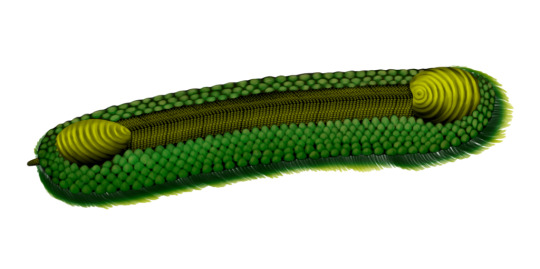
Halkeria
However, fossils from 2007 onwards have supported a new interpretation of the Early-Cambrian tommotiids, and a new hypothesis that brachiopods evolved from tommotiids.
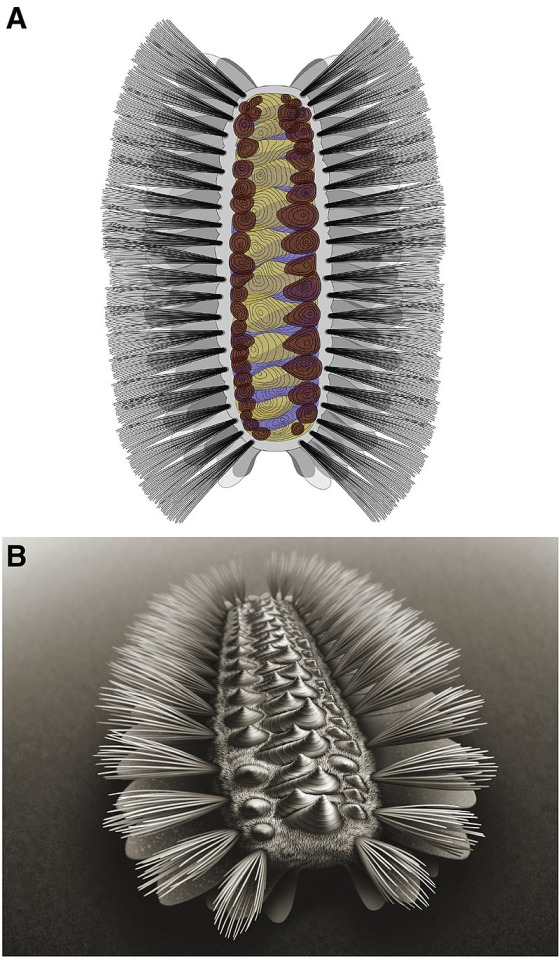
Studies seem to suggest that Halkeria is closer to molluscs while tommotiids are more closely related to brachiopods.
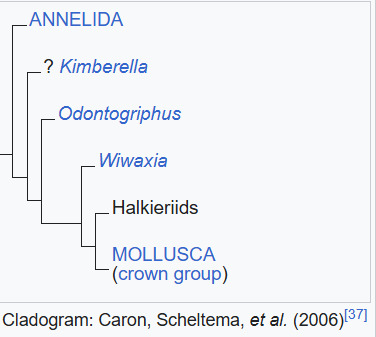

Sadly, at the end of the Paleozoic, 2/3 of the brachiopods wet extinct and they haven't been the same since. Knoll and Bambach concluded that brachiopods were one of several groups that were most vulnerable to the Permian–Triassic extinction, as all had calcareous hard parts (made of calcium carbonate) and had low metabolic rates and weak respiratory systems.
Today, there are three classes of brachiopods left: Lingulata,

Craniata,

and Rhynchonellata.

Tune in Monday to learn about an extraterrestrial event that occurred in the Ordovician Period. Fossilize you later!
14 notes
·
View notes
Text
just remmebered the fossil site i went to once some years ago i need to go back..... it is full of old marine fossils (bivalves and the like) and is open for public fossil hunting + collecting and is so cool. last time i went with my family we didnt bring tools since we didnt know much about it but i found a big clump of old bivalve shells just sitting on the ground it was so neat
3 notes
·
View notes